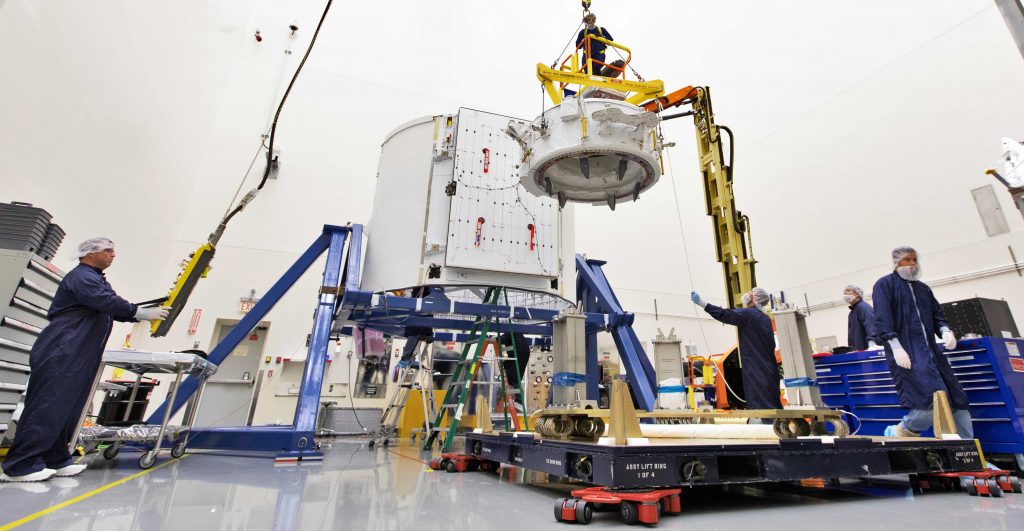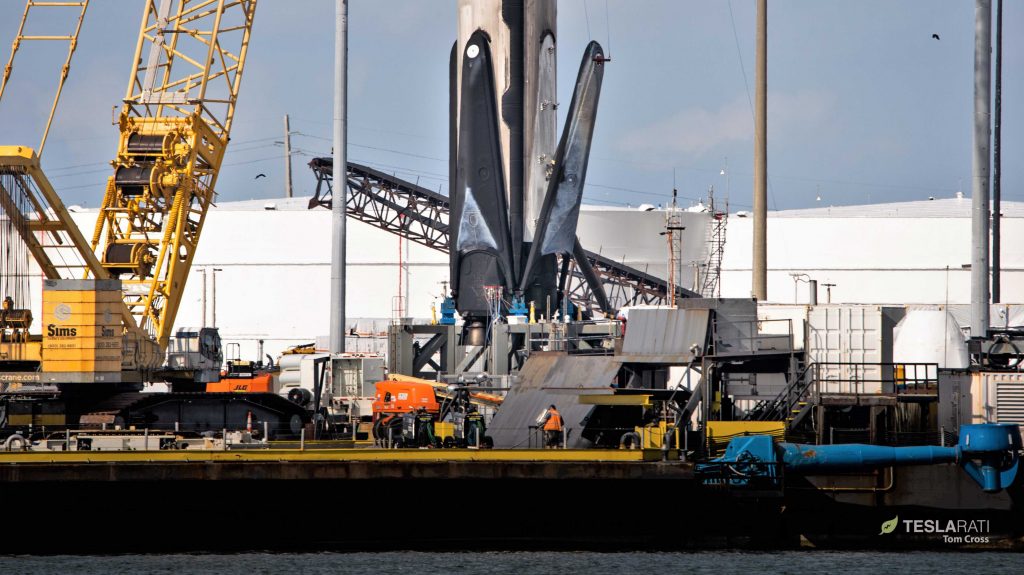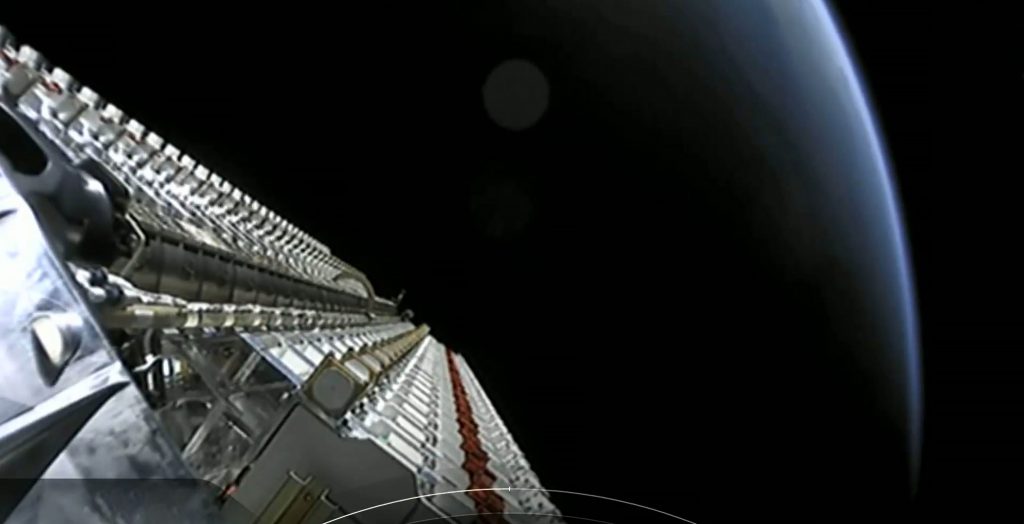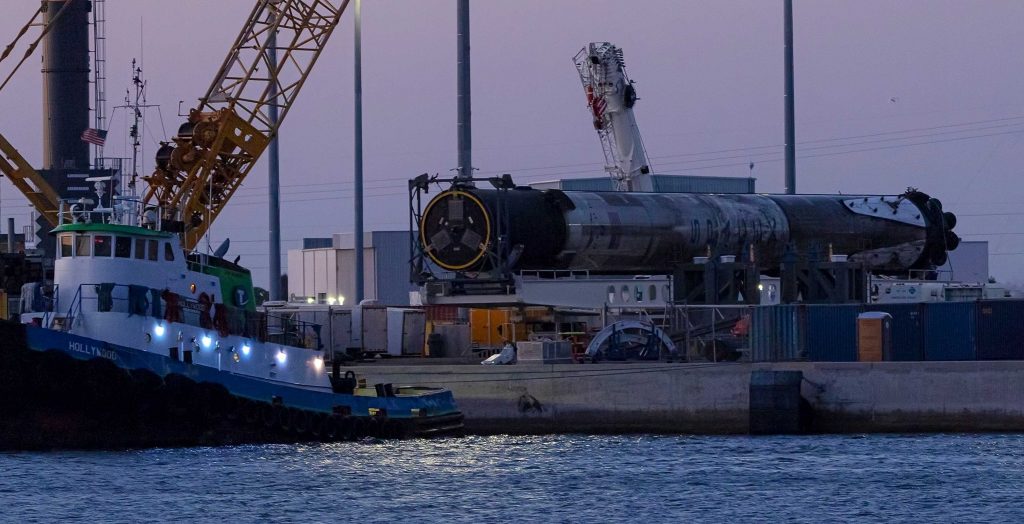Local amateur photographer and spaceflight fan Michael Tapes has graciously shared a new aerial view of SpaceX’s Florida Starship facility, where dozens of workers can be seen buzzing around what is hoped to become the first orbital-class prototype of the massive spaceship and upper stage.
Tapes’ aerial footage offers a unique look at the layout of SpaceX’s Florida site as of July 9th, illustrating just how active and expansive it is. Some workers can be seen building something (perhaps preparing a new worksite) under a large, white tent, while another group surveys two large Starship segments and a third works to prepare new stainless steel ring sections. Of note, those two large Starship segments appear to be bereft of any obvious activity, perhaps a consequence of a fire that caused about $100,000 in damage the day prior (July 8th).
In fact, the shipping container that took what looks like the entirety of fire-related damage is visible on the west side of the SpaceX facility’s main hangar. Workers could be seen heading inside the extremely scorched container, likely removing debris, cleaning up the site of the incident, and preparing to scrap the damaged container itself.
Thankfully, nobody was injured by the fire and ~$100K of damage is certainly an inconvenience but is definitely nothing more for a multibillion-dollar company like SpaceX. Given that dozens of vehicles are visible in the parking lot, it’s safe to say that tons of work is ongoing under the roofs of the site’s many covered buildings, potentially designing Starship/Super Heavy, working on the rocket’s first orbital-class thrust structures, building new steel ring segments, and much more. With any luck, work on orbital Starship assembly and integration has already resumed following the small July 8th fire.


Star(ship) Wars
Speaking of that work, prior to the last week or so of progress on SpaceX South Texas’ own orbital Starship prototype, both Florida and Texas appeared to be more or less tied with two large Starship segments each and various other 9m-diameter subsections spread around their respective facilities. Impressively, Boca Chica has been marked by a flurry of recent work as multiple in-process steel rings were stacked on top of the Texas Starship’s propulsion and tankage section.
In just the last two weeks of June, workers thus pushed through the brutal South Texas heat and humidity to stack three new sections of fuselage, literally doubling the height of Boca Chica’s (hopefully) orbital-class Starship prototype in a dozen or so days. The ship’s conical nose section continues to be polished, while some sort of additional work is likely going on inside, away from public view. It’s hard to get a good overhead view but it’s safe to assume that – in the large barrel sections both in Florida and Texas – technicians are working to install (or at least prepare for) stainless steel tank domes, one of the last major finishing touches for spacecraft’s tank sections.
A huge amount of work remains for both sites but the visible progress as new ship segments are stacked and welded together is undeniably cathartic and satisfying. Working 10-12 hour shifts exposed to the Texas and Florida summer sun, heat, and wildlife is in no uncertain terms bound to be a hellish experience, but at least the hard work is so obviously producing results.
The most exciting kind of grass-watching
Back in Florida, several additional Starship barrel sections are in various stages of work, at least two of which appear to be nearly ready for stacking atop the propellant tank section already being assembled. Meanwhile, propellant tank domes were spotted in different stages of fabrication inside the Florida facility’s main hangar-cum-production-line, awaiting their turn to leave the building and prepare for installation on Starship East.
All said and done, once those visible segments are installed, Starship East will (at least by appearances) be neck and neck with its Texas sibling once more. In reality, there is likely no actual race between the two sites and they are reportedly sharing any critical discoveries and lessons-learned. Nevertheless, humans are notoriously competitive and one can only begin to imagine the (hopefully friendly) rivalry forming between the geographically distinct teams.



At the same time, SpaceX’s Florida team has several home-field advantages, so to speak, owing to their proximity to the several hundred SpaceXers working at the company’s Florida launch facilities and recovery fleet. Additionally, Florida’s Starship facility is just a few dozen miles away from SpaceX’s Kennedy Space Center Pad 39A, the most likely site of Starship’s (and Super Heavy’s) first suborbital and orbital launch attempts.
At the end of the day, a little friendly internal competition and – more so – a literal Starship A/B test are bound to be a huge benefit for SpaceX’s next-gen launch vehicle program, significantly increasing the speed at which the company can make mistakes, solve problems, and get Starship ready for orbit.
Check out Teslarati’s newsletters for prompt updates, on-the-ground perspectives, and unique glimpses of SpaceX’s rocket launch and recovery processes.

<!–
–>
var disqus_shortname = «teslarati»;
var disqus_title = «SpaceX’s Florida Starship shown off in aerial footage as Texas prototype grows rapidly»;
var disqus_url = «https://www.teslarati.com/spacex-florida-starship-grows-texas-starhopper-prep/»;
var disqus_identifier = «teslarati-108829»;









